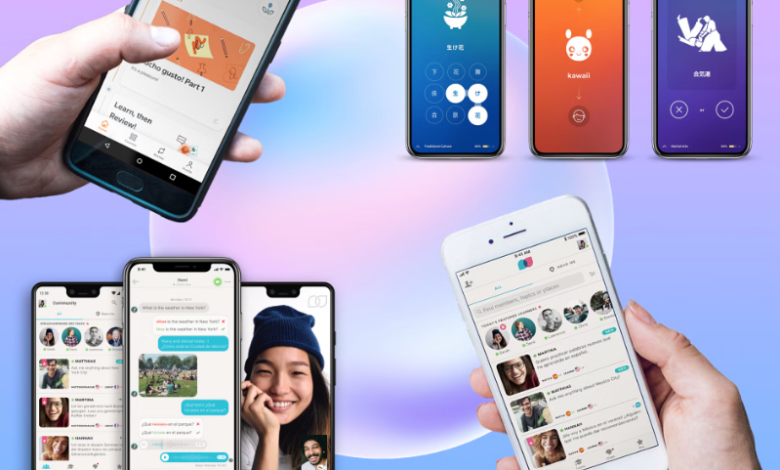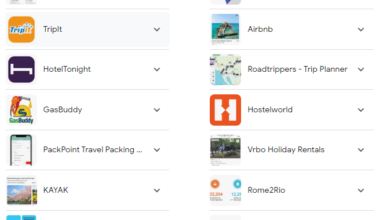What is Core App Dashboard? A Comprehensive Guide

The Core App Dashboard is an essential tool for any business or organization looking to stay organized, efficient, and on top of their game. It serves as a central hub for managing various aspects of a business, including finances, customer relationships, sales performance, and more. In this section, we will explore the key features and benefits of the Core App Dashboard in detail.
What is the Core App Dashboard?
The Core App Dashboard is a web-based platform that provides real-time visibility into all areas of your business. It allows you to track key metrics and KPIs (Key Performance Indicators) in one place, making it easier to monitor the health of your business and make informed decisions. The dashboard is customizable to your specific needs and can be accessed from any device with an internet connection.
Dashboard Layout
As soon as you log in to the Core App Dashboard, you will be greeted by a sleek and user-friendly interface that displays all your important data at a glance. The main dashboard page consists of different modules or widgets that give you quick insights into different aspects of your business. These modules can be arranged according to your preferences so that the most critical information is easily accessible.
Features and Benefits
One of the primary uses of the Core App Dashboard is for financial management. It allows you to keep track of income, expenses, cash flow projections and generate reports from this data quickly.
The core app dashboard is the main interface and control center of any application. It plays a crucial role in providing users with an overview of the app’s functionality, features, and performance. Therefore, it is essential to have a deep understanding of its purpose and functionality to maximize its potential.
Purpose of a Core App Dashboard:
- Centralized Information Hub: The primary purpose of a core app dashboard is to act as a centralized information hub for the entire application. It provides users with quick access to all the critical data points they need to monitor and manage the app effectively.
- Real-time Performance Monitoring: The dashboard allows users to track the real-time performance of their app across various metrics such as traffic, user engagement, conversion rates, etc. This enables them to identify areas that require improvement and make data-driven decisions.
- Customization and Personalization: A well-designed core app dashboard allows users to customize their view according to their specific needs and preferences. They can choose and prioritize which metrics or data they want to see at a glance, making it easier for them to stay informed about what matters most.
- Streamlined Management: By centralizing important information in one place, the core app dashboard streamlines management tasks for users. It eliminates the need for navigating through different sections or screens within an application, saving time and effort.
Types of Core App Dashboards
When it comes to core app dashboards, there are several types that businesses and organizations can choose from depending on their specific needs and goals. In this section, we will explore the different types of core app dashboards and how they can be used to enhance productivity and decision-making processes.
- Analytical Dashboards
Analytical dashboards are designed to provide users with in-depth insights and data analysis on a particular aspect of the business. These types of dashboards typically use charts, graphs, and other visual representations to display trends, patterns, and key performance indicators (KPIs). They are useful for businesses looking to make data-driven decisions as they allow for a deeper understanding of their operations. - Operational Dashboards
Operational dashboards focus on providing real-time information about current activities within an organization. They often integrate with various data sources such as social media accounts, email marketing tools, CRM systems, etc., to track and monitor these activities in real-time. This type of dashboard is especially helpful for managers who need to keep a close eye on day-to-day operations or identify potential areas for improvement. - Strategic Dashboards
Strategic dashboards are designed for top-level management and executives who need a high-level overview of the entire organization’s performance. These dashboards usually contain fewer metrics compared to analytical or operational ones but offer a broader scope by incorporating data from multiple departments or business units.
Benefits of Using a Core App Dashboard
The Core App Dashboard is a powerful tool that offers numerous benefits to its users. From simplifying tasks to increasing productivity, the dashboard has become an essential component of many businesses’ operations. In this section, we will delve deeper into the various benefits of using a Core App Dashboard.
- Centralized Data Management:
One of the most significant advantages of using a Core App Dashboard is its ability to centralize data management. The dashboard allows you to access all your data from one place, making it easier to monitor and manage your business activities effectively. This eliminates the need for switching between different systems or applications, saving time and allowing for a smoother workflow. - Real-time Updates:
With a Core App Dashboard, you can have access to real-time updates on your business’s performance metrics. This means that you do not have to wait for daily or weekly reports to analyze your progress; instead, you can view instant updates on key performance indicators (KPIs) such as sales figures, website traffic, customer engagement, and more. These real-time updates enable you to make quicker and more informed decisions based on accurate information. - Customization:
The beauty of a Core App Dashboard is its flexibility and customization options according to individual user requirements. Users can choose which KPIs they want to track and how they want them displayed in the form of charts, graphs, tables, etc., providing a personalized experience tailored towards their specific needs.
How to Set Up and Customize Your Core App Dashboard
The core app dashboard is the central hub for managing and customizing your website’s content, design, and functionality. It gives you complete control over your website and allows you to easily make changes without any technical knowledge or coding skills. In this section, we will walk you through the process of setting up and customizing your core app dashboard so that you can tailor it to meet your specific needs.
Step 1: Login to Your Core App Dashboard
To access your core app dashboard, you first need to log in to your website’s admin panel. This can usually be done by adding “/wp-admin” at the end of your website domain (e.g., “www.yourwebsite.com/wp-admin”). Once logged in, you will be directed to the main page of your core app dashboard.
Step 2: Familiarize Yourself with the Dashboard Layout
Before diving into customization, take some time to familiarize yourself with the layout of the core app dashboard. The dashboard is divided into different sections like posts, pages, media library, appearance, plugins, and more. Each section has its own set of tools and options that allow you to manage different aspects of your website.
Step 3: Set Up General Site Settings
The next step is to configure general site settings for a smooth functioning of your website. To do this click on “Settings” from the left menu bar and go through each tab such as general settings; writing settings; reading settings; discussion settings; media settings; perm.
Key Features and Tools in a Core App Dashboard
The core app dashboard is the central hub of any application, providing users with access to vital features and tools. It serves as a one-stop destination for managing various aspects of the application, from user profiles to analytics. In this section, we will explore the key features and tools that make up a core app dashboard.
- Customizable Layout:
One of the main benefits of a core app dashboard is its customizable layout. Users can arrange and organize different sections according to their preferences and needs. This allows for a personalized experience, making it easier for users to access important information quickly. - User Management:
A key feature in any core app dashboard is user management. This includes creating new user accounts, assigning roles and permissions, and managing existing users’ profiles. A well-designed user management system ensures secure access control and streamlines the process of adding or removing users from an application. - Analytics and Reporting:
Data is crucial for understanding how well an application is performing, which features are popular among users, and identifying areas for improvement or optimization. Core app dashboards often include analytics and reporting tools that provide insight into these metrics through visualizations such as charts, graphs, and tables. - Content Management:
The content management feature in a core app dashboard allows administrators to create, edit, publish or delete website content without needing technical knowledge or coding skills. This enables them to keep the application up-to-date with fresh content while maintaining consistency across all pages.
Best Practices for Using a Core App Dashboard Efficiently
Using a core app dashboard efficiently is crucial for maximizing productivity and effectively managing your work. A well-organized and optimized dashboard can help you stay on top of tasks, track progress, and make informed decisions. In this section, we will discuss the best practices for using a core app dashboard efficiently.
- Customize your Dashboard: The first step to using your core app dashboard efficiently is to customize it according to your specific needs. You can rearrange widgets, add or remove them as needed, and adjust the layout to prioritize important information. This will help you save time by having all the relevant information readily available on one screen.
- Regularly Review Your Data: It’s essential to regularly review the data shown on your dashboard so that it remains accurate and up-to-date. Make it a habit to check the data at least once a week or more frequently if needed. Outdated information can hinder decision-making and lead to inefficient use of resources.
- Utilize Filters: Most core app dashboards offer filters that allow you to narrow down your data based on specific criteria such as date range, location, category, etc. These filters are useful in quickly finding the information you need without scrolling through multiple pages or widgets.
- Utilize Widgets Effectively: Each widget represents different data sets and metrics which provide valuable insights into various aspects of your work flow. It’s essential to understand how each widget works and utilize them effectively based on your goals and objectives.
Troubleshooting Common Issues with a Core App Dashboard
One of the key benefits of using a core app dashboard is its ability to streamline and organize various aspects of a business or project. However, like any technology, there may be instances when issues arise and cause disruptions in its functionality. In this section, we will delve into some common problems that users may encounter when using a core app dashboard and how to troubleshoot them.
- Dashboard not loading properly:
This is one of the most common issues faced by users while accessing their core app dashboard. If you are experiencing this problem, the first thing to check is your internet connection. A slow or unstable network can often lead to an incomplete or delayed loading of the dashboard. Another reason could be an outdated version of your web browser. Make sure you are using the latest version with all updates installed to prevent compatibility issues. - Difficulty in logging in:
Sometimes users may have trouble logging into their core app dashboard due to forgotten login credentials or incorrect input of login information. In such cases, it is best to try resetting your password through the “forgot password” option on the login page. If that does not work, reach out to your system administrator for assistance. - Data not syncing/ updating:
The whole purpose of a core app dashboard is to provide real-time insights by synchronizing data from various sources into one central location. However, if you notice that certain data inputs are not being updated or synced correctly, there could be several reasons for this issue:
Future Developments and Trends in Core App Dashboards
In recent years, core app dashboards have become an essential tool for businesses of all sizes. These centralized platforms provide a comprehensive view of various aspects of the company’s operations and enable decision-makers to make data-driven decisions. With the rise in popularity and usage of core app dashboards, it is crucial to stay updated on the latest developments and trends shaping their future.
One significant development that is expected to impact core app dashboards is the integration of artificial intelligence (AI) and machine learning (ML) capabilities. As these technologies continue to evolve, they will play a more prominent role in analyzing vast amounts of data and providing actionable insights. This will make it easier for businesses to identify patterns, forecast future trends, and automate routine tasks.
Another trend that is gaining traction in the world of core app dashboards is the use of natural language processing (NLP) technology. NLP allows users to interact with the dashboard using spoken or written commands, making it more user-friendly and accessible. It also enables them to receive real-time answers and insights without having to navigate complex menus or enter specific search criteria.
One area where we can expect significant advancements in core app dashboards is data visualization techniques. While most current dashboards offer standard graphs and charts, future versions are likely to incorporate more advanced visualizations such as infographics, heat maps, tree maps, etc. These dynamic visual representations will enhance data understanding and enable users to spot trends or anomalies quickly.
What You Need to Know More About
The Core App Dashboard is a powerful tool for managing and monitoring your app’s performance. In this comprehensive guide, we have covered all the key features and functionalities of the dashboard and provided tips on how to make the most out of it.
Firstly, we explored the importance of having a dashboard in your app and how it can help you gain insights into your users’ behavior, track app usage, and identify any issues that need to be addressed.
Next, we looked at the various sections of the Core App Dashboard including Overview, Users, Retention, Engagement, Revenue, Referring Websites, Reviews and Ratings. Each section provides valuable data and metrics that can help you understand your audience better.
We also discussed the customizable date range feature in each section which allows you to analyze data over different time periods. This is particularly useful when tracking changes in user behavior or identifying trends in revenue or engagement.
Additionally, we highlighted some best practices for using the Core App Dashboard effectively. These include setting specific goals for each metric you are tracking, regularly checking on your progress towards these goals and making adjustments as needed.
Furthermore, we emphasized the importance of analyzing both quantitative data (numbers and statistics) as well as qualitative data (feedback from users) to get a complete understanding of your app’s performance. The Reviews and Ratings section offers valuable insights from users’ perspectives that can help inform future updates or improvements for your app.




